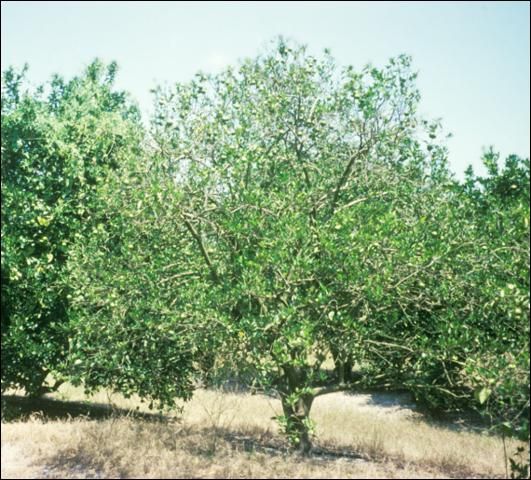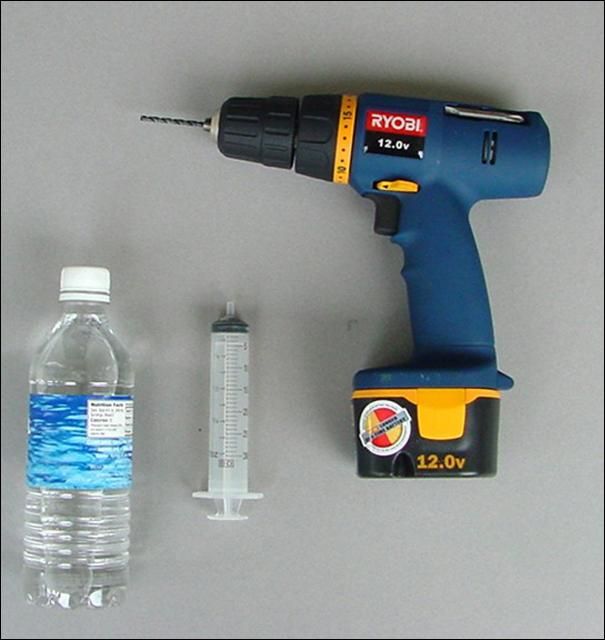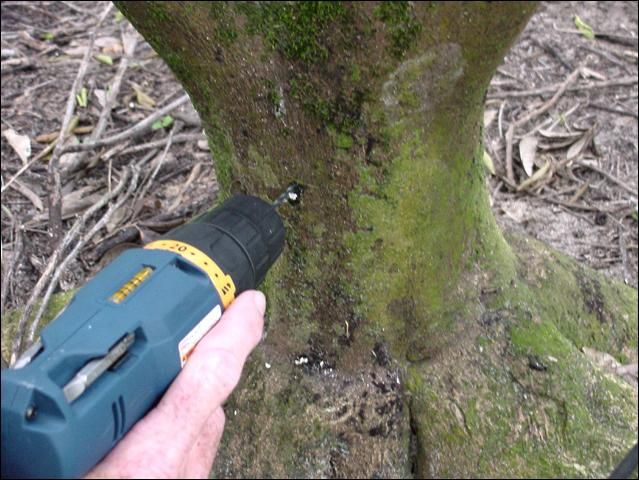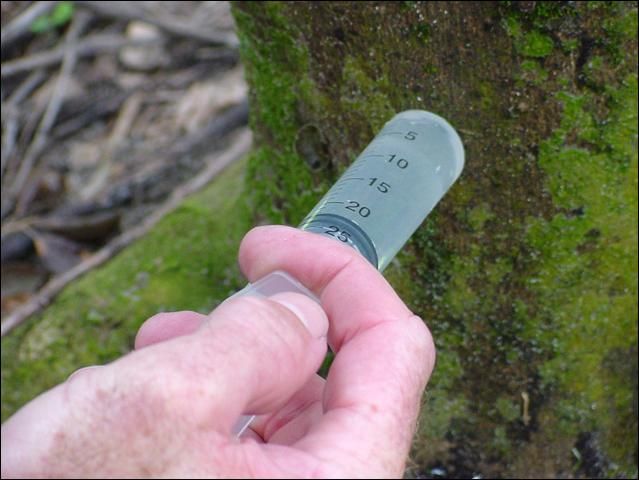Citrus blight is a disease that causes thousands of trees to become unproductive every year, resulting in losses in excess of $60 million annually. The cause of blight is unknown. The disease is found in many citrus-producing regions including North America, the Caribbean, South America, South Africa and Australia. Blight is found in mostly tropical or semitropical regions with moderate to heavy rainfall but is not reported in more arid regions such as the Mediterranean Basin and California. Blight has been present in Florida for more than 100 years and was frequently called young tree decline in the 1960s and 70s. Trees affected by blight grow normally until they reach five to six years of age or older and then begin to wilt and to exhibit leaf loss, reduced growth flushes, die back and general decline (Figure 1). In early stages of blight, the symptoms may be restricted to one sector of the tree and then expand to the entire tree. Trees remain in various stages of decline and become unproductive, but they rarely die. As the tree declines, vegetative sprouts may be produced on the trunk or on larger interior branches near the trunk. Trees affected with blight will not recover from the disease even if they are severely pruned. Pruning merely makes the tree look acceptable for a year or two before it declines again.

Blight affects all major rootstocks and seedlings to varying degrees but is most severe on rough lemon, Rangpur lime, trifoliate orange and citrange rootstocks. Trees grown on sweet orange, sour orange, mandarin and some citrumelo rootstocks usually have lower incidences of blight and usually do not exhibit symptoms before trees are 15 to 20 years old.
As the trees decline, water uptake within the xylem (wood) is reduced, zinc accumulates in the bark and outer xylem tissue, and zinc deficiency patterns develop in the leaves. As the xylem vessels in the trunk become plugged with amorphous occlusions, water transport is reduced, causing a general wilt appearance. New xylem vessels are produced in higher numbers but are smaller in size and eventually become plugged.
When blight first appears within a grove, the distribution pattern of affected trees appears to be random. Thereafter, the disease spreads to adjacent trees within the row more frequently than across rows. Blight has not been transmitted by ordinary budding or grafting practices. However, grafting roots of blight-infected trees to healthy ones will cause the healthy tree to develop blight symptoms in about two years. Natural root grafting of adjacent trees has been associated with the spread of the disease.
At present, the only control measure for blight is to replace declining trees with trees on rootstocks that are less susceptible to the disease. Trees on Cleopatra mandarin develop symptoms more slowly than other commonly used rootstocks, but symptoms will eventually occur with time. Blight is uncommon in trees on sweet orange rootstock.
An easy and rapid field test for blight is to inject water with a syringe into the trunk of the tree. Trees that have blight will not accept water via the syringe test method regardless of the amount of pressure applied to the syringe. To conduct this field test you will need the following tools: battery powered drill, 9/64-inch drill bit, 30 ml syringe and water (Figure 2). The drill bit diameter may vary depending on syringe type but it must be slightly smaller than the tip on the end of the syringe to allow for a tight fit. This tight fit between the tree trunk and syringe will restrict water flow out of the drilled hole when pressure is applied to the syringe. To force water into the tree trunk, significant pressure must be applied to the syringe because injecting water into the tree requires more pressure than when injecting water into other types of tissue.

Steps To Use in Conducting a Field Blight Test
Step one: Drill a hole into the trunk of the tree above the bud union using a sharp drill bit and a battery powered drill (Figure 3). The hole should be at least one inch deep into the tree trunk.

Step two: Fill the syringe with water, making sure all the air within the syringe is purged before inserting the tip of the syringe into the tree trunk.
Step three: Insert the tip of the syringe into the drilled hole, making sure that a tight fit between the tree trunk and syringe tip exists. Apply pressure to the syringe to see if water is accepted by the tree (Figure 4). As water is accepted, one can see the plunger of the syringe move slightly forward. Healthy trees with no visual symptoms in the canopy should accept at least 3 ml in 10 seconds, whereas fully blighted trees will accept less than 0.5 ml of water in the same 10 second period. Trees in early stages of the disease will accept 1 to 2 ml per 10 seconds. Trees infected with blight will accept very little or no water, whereas a tree declining from other diseases or disorders will accept water readily, thus providing an easy field diagnostic test for citrus blight.
